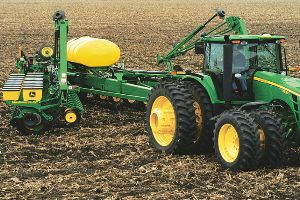Survey Shows Increased Crop Yields Following Cover Crop Planting

Cover crop planting has proven to increase crop yields and will become a more commonly used tactic in 2013
According to recent North Central SARE survey results, as drought conditions ripped through most of the Midwest in 2012, acreage where cover crops had previously been planted experienced higher crop yields. This success has led farmers to plan for increased cover crop acreage in 2013.
The data shows corn yields in areas where cover crop planting occurred in 2012 achieved a 9.6% higher yield than acres where planting did not occur. The same held true for soybeans, as yields were 11.6% higher in areas where cover crops had been planted.
University of Missouri agronomist and regional director of Extension programs for North Central Region SARE Rob Myers, says in the report, "The yield improvements provided from cover crops in 2012 were likely a combination of factors, such as better rooting of the cash crop along with the residue blanket provided by the cover crop reducing soil moisture loss. Also, where cover crops have been used for several years, we know that organic matter typically increases, which improves rainfall infiltration and soil water holding capacity."
Cover crop planting is likely to be a growing tactic among farmers in the future as well. The survey results indicate 301,100 acres of cover crops are expected to be planted in 2013, up from 218,608 in 2012.
The North Central SARE results indicate higher crop yields as a result of cover crop planting in 2012, which is likely the reason for expected increased cover crop acreage moving through 2013.